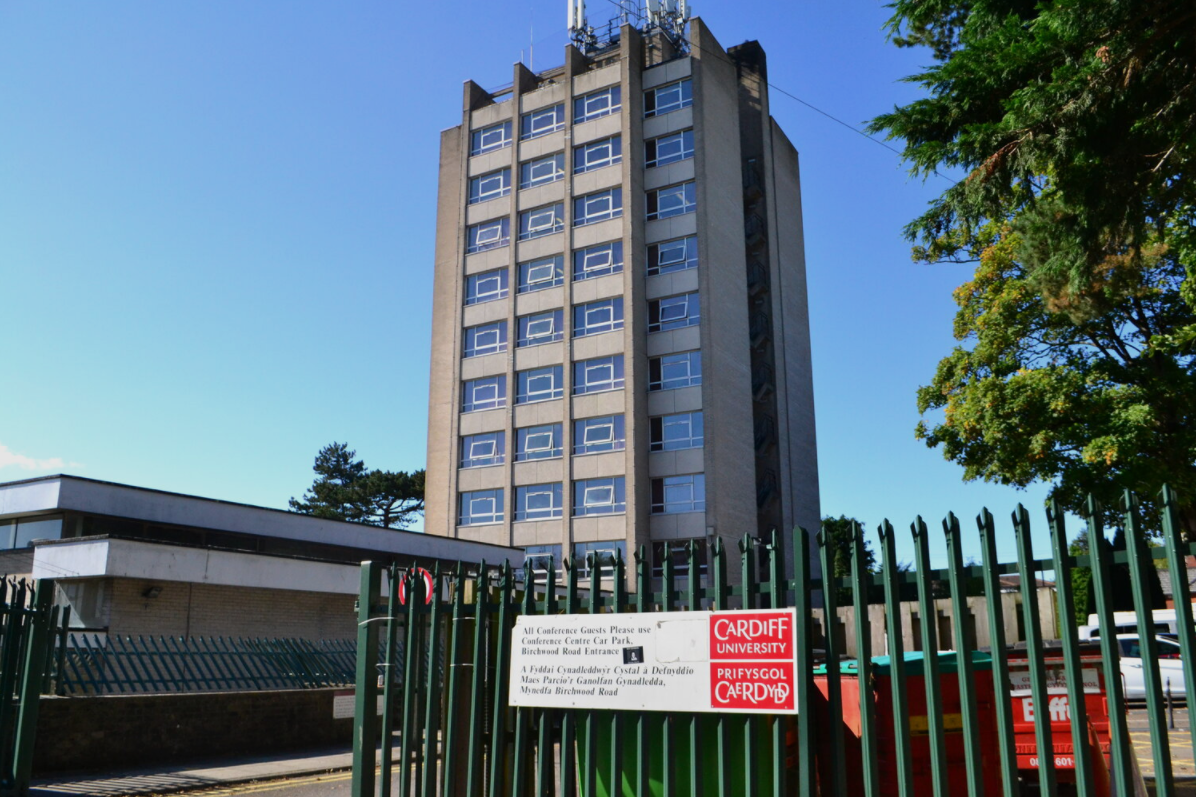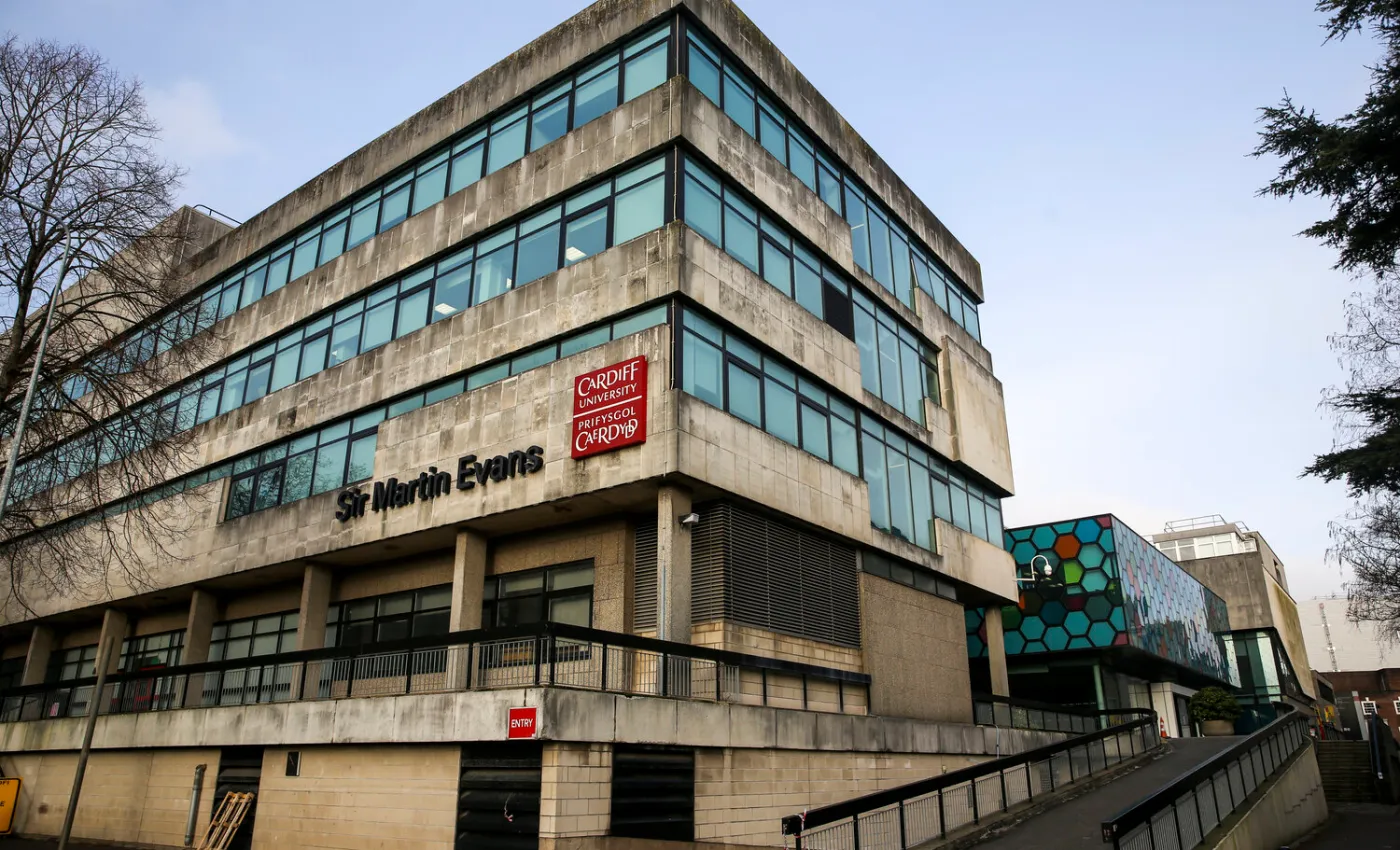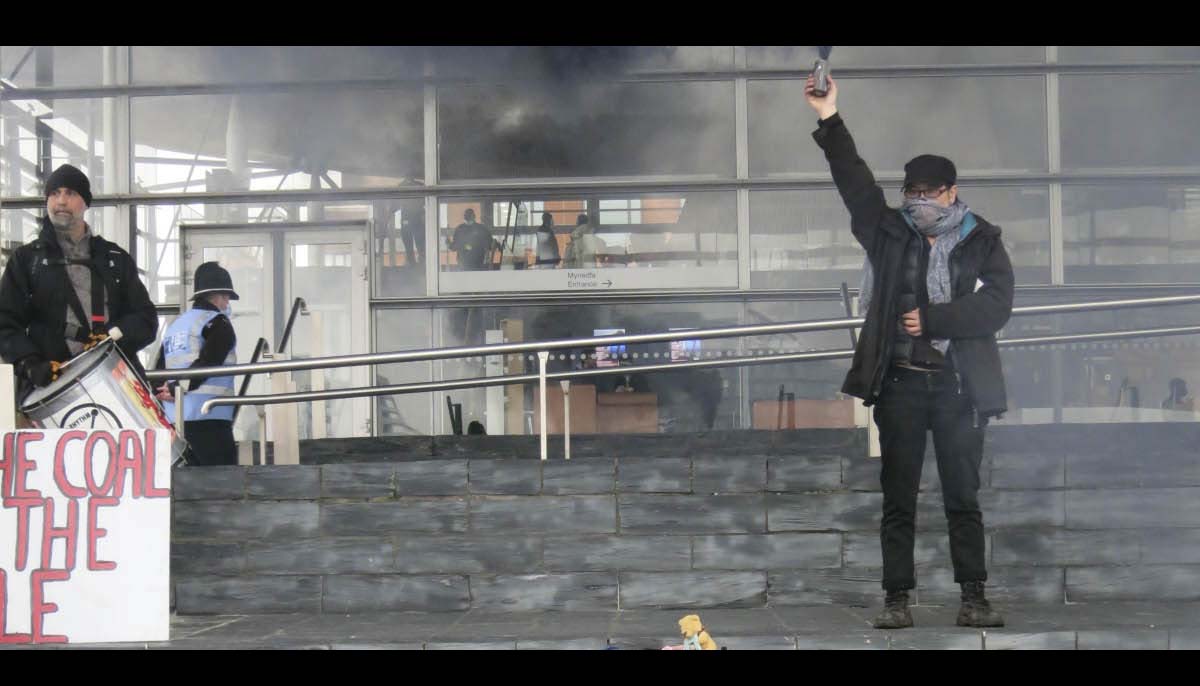
Two Weeks In The Death Spiral Of Cardiff University
By an anonymous academic. Cover image by Adwitiya Pal
On the second day of classes in 2025, in a series of group meetings, academics filed into the main lecture hall and were presented with a short powerpoint explaining that the university would cut around 10% of its total academic staff – we were told at least 400. These cuts are uneven: some groups were ‘safe’, others (like medicine and bioscience) were told they would lose 10% or 35% of academics. In the merged ‘humanities’ meeting, an Executive Board member admitted that half of those in the hall were facing the sack. Many colleagues were faced with a slide announcing the end of their programme, and likely with that their job.
Colleagues were in tears – and then had to return to teaching classes. In the humanities meeting, the presentation’s slide on ‘mental health support’ prompted collective laughter (which was edited out of the official recording). Later a colleague found out that (alongside self-care websites) the free counselling helpline’s appointments were already fully booked until March.
Eighteen hours after these announcements, at around 8:30am, just under 2000 staff received risk of redundancy notices by email, including me. There was no information about how those ‘at risk’ were chosen, and this started the statutory 45 days’ consultation over our jobs. But in an all-university meeting with the Vice Chancellor in the same lecture hall that day, we were told that we should engage with the ‘proposals’ and offer counter-proposals. Security staff stood along the corridor as we left the hall. I could lose my job in a month, before the end of the academic year, but apparently it’s only a proposal.
What do our Executive want? “Higher quality students” (an actual quote) in smaller numbers, with even smaller numbers of academics to produce league-table-leading staff-student ratios. To justify the proposals, the Board sent a PDF a week later that laid out Russell Group comparisons for our proposed staff-student ratios: the targets (for my department, 1 to 24 students) are well above the Russell Group average.
Students will be neglected, and remaining staff will be worked to the bone.
These plans have been presented with the Board’s now-regular use of mashed-up AI images and photos of open-plan spaces “stolen” (another quote) from other institutions. For the rest of the university, parallel administrative plans include centralisation of all administrative staff, and new roles – “learning designers”, “academic developers”, and “instructional technologists”. Some of these non-academic, non-specialist roles might be for the Executive’s new campus in Kazakhstan.
Despite never discussing this with academic staff, “Foundation” courses are set to be advertised to Kazakh students from mid-February, based on programmes quickly put together in the last six weeks by colleagues who fear for their jobs.
Some colleagues were told that offering to teach in Kazakhstan might save their jobs. Apparently the university will decimate itself in Cardiff and rebuild itself in Astana.
Opening a new Kazakh campus is just another reason why the Executive Board’s claim of imminent financial peril is untenable. Cardiff University is not in immediate financial difficulties. The university has around £188 million in accessible cash funds to support a paced, considered reorganisation and investment in new fields.
The Vice Chancellor has spent six months claiming poverty; now, we’re being told that we need “academic sustainability” as well.
We want to know what all this means, and how the Board have come to their plans for deep cuts. Instead, we have been sent piles of spreadsheets, in PDF format, on Friday afternoons, none of which come with explanations of the proposals. Our risk of redundancy notices said that equality impact assessments had been done; so far we have received some copy-paste PDFs described by HR as unfinished “live documents”. The business cases for the proposals contain no financial plans. Either the University Executive is horrifyingly underprepared, or intentionally undermining our ability to respond with counter-proposals.
Not that we know how to respond. We have been told that counter-proposals will only be accepted on a standard form; we have only just been given this form. We have a single email address for feedback (use at your own risk). In the meantime, in my department we have been asked to explain our teaching “resilience” – to itemise who can cover other academics’ courses.
We fear that if we say we’re replaceable we’ll be cut, but also that we need to comply to save our department. Heads of Schools ‘at risk’ have also got risk of redundancy notices, but are expected to be in charge of organising our counter-proposals and managing redundancy processes, a clear conflict of interest.
What else can we academics do? The Senate is the senior forum for academic staff to shape academic strategy, as well as examine university plans. Senate members asked immediately for an emergency meeting – but bizarrely this was delayed, and the meeting was arranged for the maximum four-week period allowed under the ordinances. It was then suggested that we don’t bother, because the next regular Senate meeting would then only be a week after that.
There is no trust left. Even before the hammer fell, a survey found that only 31% of staff said they trusted the University Executive Board to be honest in their communications. People are also terrified. Three Heads of Schools refused to join in the request for an emergency Senate meeting (as did a student representative) because they fear antagonising the Executive in the ‘consultation’ period.
Cardiff UCU opens a ballot for a strike mandate against compulsory redundancies this Monday 24 February, which might be the only leverage we can really get against these cuts.
The university is a ticking time bomb. But the mental health impact assessment of these cuts (another Friday PDF) says we can lean on our line managers. My line manager, a quiet mid-career academic with an international research reputation, is also devastated.
We have both trained for a specialist educational job doing cutting-edge research, building international projects, and teaching courses that bring all of these ideas to our wonderful students. I don’t know how we can do this with the loss of so many colleagues and departments, with more students for each remaining academic, and with no departmental administrative support. Maybe the explanation will be in a PDF we receive when we’re made redundant.



2 Comments
Comments are closed.